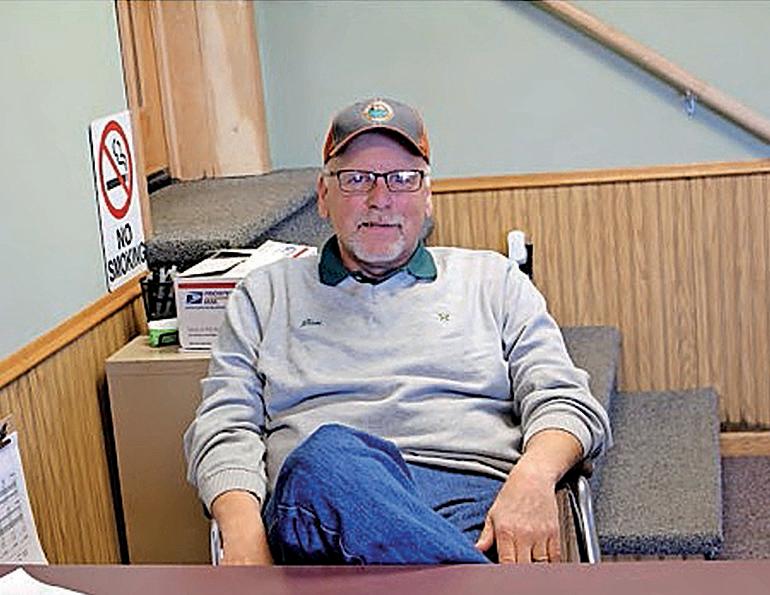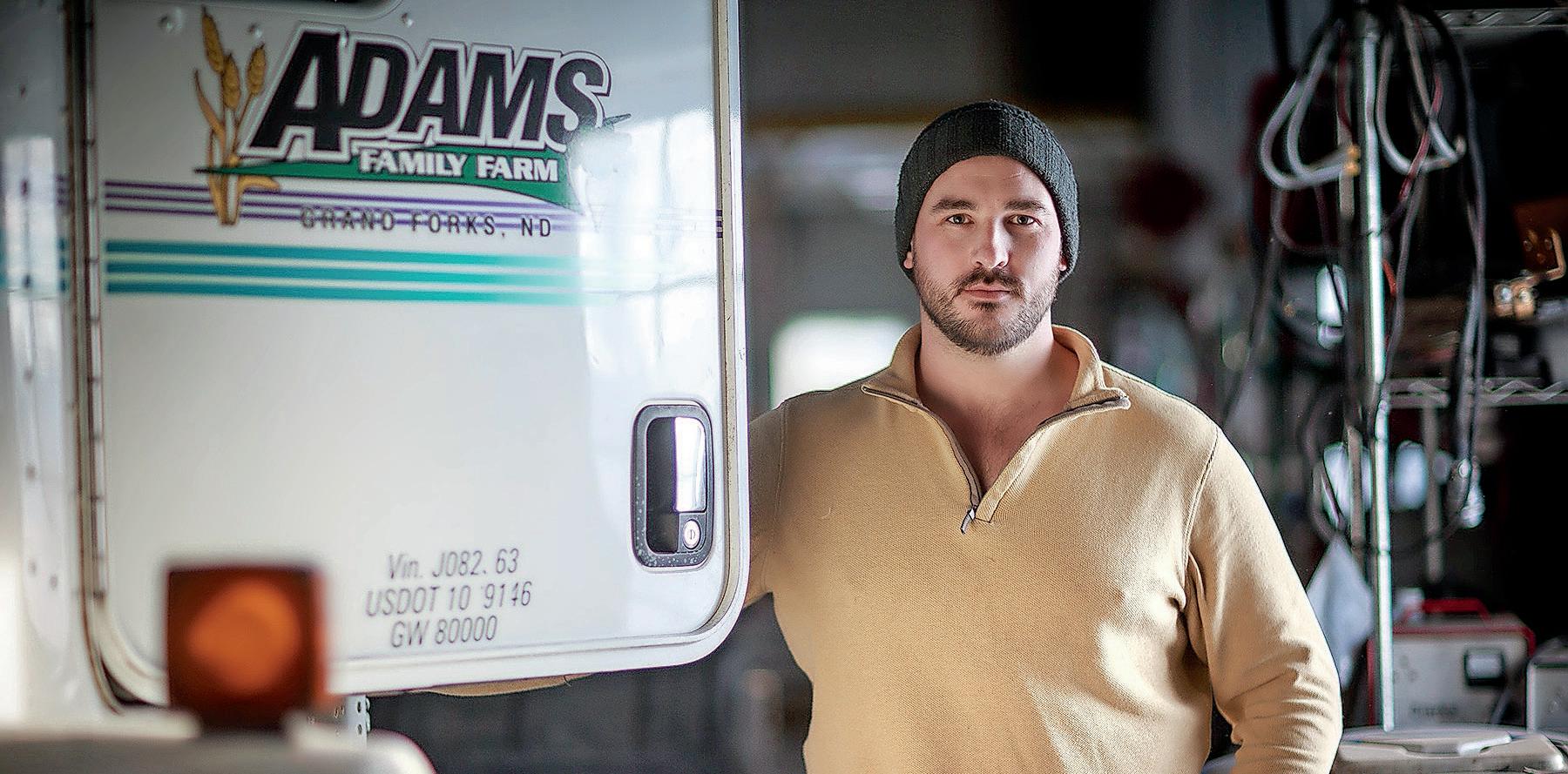
5 minute read
Goodbye to a Bean Great Bean News
by agweek
North Dakota dry, edible bean manager James Enger was a giant in the industry
By Ann Bailey
James “Jim “Enger was straightforward, honest and one of the most knowledgeable dry, edible bean company owners in the industry, say members who knew him.
Enger, 68, died Feb. 14 at Sanford Hospice in Fargo, North Dakota, after a 17-month battle with pancreatic cancer, according to Bilden Askew Funeral Home in Northwood, North Dakota.
“I always thought Jim had the best understanding of the bean business of almost anyone I ever met,” said Randy Olson, an edible bean business competitor and longtime friend of Enger’s.
Enger, formerly of Northwood, began working in the edible bean industry in 1972 when he helped build the E.H. Walrath and Sons plant in Northwood. After the plant opened, Enger got a job there, working his way up during the next 10 years to manager, according to a story in the spring 2015 edition of the Northarvest Bean Growers magazine.
In 1985, he left the Northwood bean company to manage Northland Marketing in McCanna, North Dakota, which he and Pat King purchased in 1988, the Northarvest article said.
During the next 31 years, Enger managed several dry edible companies in North Dakota, including Kelley Bean in Hatton and Engstrom Bean and Seed in Leeds, before retiring in 2019.
A few years before their 20-year partnership, Enger began mentoring King who then was a newcomer to the dry edible bean industry.
“Jimmy taught me almost everything I know about running a bean plant,” King said.
Enger also was an innovator who spent a year developing a less-labor intensive method of shipping navy beans from Northland Marketing to the United Kingdom than the bag system they had been using.
“It was a smashing success. That shipping process still is being used today by major shippers,” King said.
Enger was meticulous about the way he ran the making sure that it was clean, inside and out, even during the hectic harvest season, King said. Meanwhile, Enger was concerned about food safety and traceability years before they became an industry standard.
“He never cut corners,” King said.
Enger, who was highly regarded in the edible bean industry, was known by other plant managers as someone they could when they needed help solving personnel problems, King said.
Enger also was generous about sharing his knowledge with other members of the dry, edible bean industry, said Tim Courneya, former Northarvest Bean Growers executive vice president.
Courneya met Enger in the mid-1970s, and from then on knew he could count on him to be a bean industry advocate when the organization needed one.
”There was never anything that he wouldn’t help you with — whether we had trade teams coming in, whether we were setting up field tours, he was always so helpful with (developing) relationships and showcasing the dry bean industry,” Courneya said. “There wasn’t a thing he wouldn’t do to help you out.”
Farmers appreciated that Enger was an edible bean manager whom they could trust, King said.
Wind, dirt damage North Dakota and Minnesota row crops, including beans
By Ann Bailey
/ Northarvest Bean Growers Assoication
“Farmers loved him, He was honest. He was super fair and he was super loyal,” he said.
Chuck Grifffin, a McCanna farmer, hauled his navy beans to Enger’s plant in McCanna for many years.
“He was very liked in the McCanna area. He was easy to do business with, just a good person,” Griffin said.
Enger was genuine and people who dealt with him knew where they stood, said Olson, former owner of Red River Bean Co. in Grafton, North Dakota, and now a consultant for the dry edible bean industry,
“He was a good, honest, straightforward guy,” Olson said.
Said King: “He was one of a kind, for sure.”
Enger is survived by his wife Laurie; sons, Chad (Trisha); Corey (Brandi); Christopher (Kaylee); and Derrick Enger; seven grandchildren, one sister and many nieces and nephews.
Gusty winds in mid- to late June damaged young crops in North Dakota and Minnesota, shearing off some of them and injuring the leaves of others.
“I think the crops that got hurt the worst are our sugarbeets and pinto beans. They got sandblasted,” said Brad Brummond, North Dakota State University Extension agriculture agent for Walsh County. “The beets took it especially hard. Typically when it blows , it doesn’t take out one beet here and one beet there. It takes out a patch.”
A wind speed of 56 mph was recorded in Grand Forks North Dakota, on Saturday, June 18 and a wind speed of 53 mph was clocked in Argyle, Minnesota, the National Weather Service in Grand Forks said. The previous day, the Williston, North Dakota airport and Beach, North Dakota had wind gusts of 53 mph, according to the National Weather Service in Bismarck, North Dakota.
Many cities across North Dakota and Minnesota recorded gusts of more than 45 mph those two days and it remained windy throughout late June.
The winds also were strong on Monday,
June 20 and Tuesday, June 21, 2022, and over the weekend of June 25, and blowing dirt was a common sight across eastern North Dakota and northwest Minnesota.

In Grand Forks County, late planting may have resulted in less acres of wind damage than would be in a typical in a year in which crops were in a later growth stage.
“A lot of the wheat, the growing point is still below the soil surface,” said Katelyn Landis, NDSU Extension agriculture agent-Grand Forks County.
However, hundreds of pinto beans acres in Grand Forks County, which had recently been planted, had to be replanted after the young plants were sandblasted by the blowing dirt.
Yields of most young crops that remained in the ground shouldn’t be affected by the wind damage, she said. However, the damage to plant leaves may make them vulnerable to diseases.
Across the Red River in Polk County western Minnesota, soil also has been airborne this month, especially on June 18, when winds of 46 mph were recorded in Crookston
“There was definitely some sandblasting with moving dirt,” said Heather Dufault, University of Minnesota Extension Service-Polk County. “I’m sure there was some damage. There was a lot of dirt moving around.”
Farmers in northwest Minnesota also had to replant edible beans, which had been destroyed by the strong winds and blowing dirt.
Some farmers were cultivating the soil in an attempt to stop it from blowing, Dufault said.
Brummond anticipates that the wind damage to soil health will result in an increase in conservation practices such as “planting green,” in which grain crops are planted into a cover crop.
Walsh County fields that were planted using the method didn’t blow, Brummond said.
Farmers whose crops were severely damaged or destroyed were faced with the difficult decision of whether they should replant at such a late date, Landis noted. Some chose to, as was evident by the planters that were back in the field the week of June 20, 2022.
Exporter of the Year
By Jeff Beach
In 2017, farmer Chris Adams had to make a quick decision on whether or not to be part of a trade mission to South America.
Adams had only recently gotten an introduction to international trade through a course through Texas A&M University when he was invited to go to Colombia by the North Dakota Trade Office. It was 10 days before the trip.
To be a part of the trip, his farm needed a website, business cards and information to hand out to potential customers of his edible beans. And that literature needed to be in Spanish.
But Adams made the decision to get on board and scramble to get what he needed.
Now just a few years later, Adams Family Farm has been honored by the North Dakota Trade Office as its Exporter of the Year for 2021.
Lindsey Warmer, director of operations for the North Dakota Trade Office, said Adams Family Farm has been rewarded for “staying positive, even with the difficulties that come with exports.”


Adams didn’t come back to the farm with any trade contracts. He said he was meeting with big buyers with little knowledge of shipping or pricing.
“I kinda jumped in head first,” he said. But the seed was planted for future discussions.
“Relationships are pretty important for a lot










